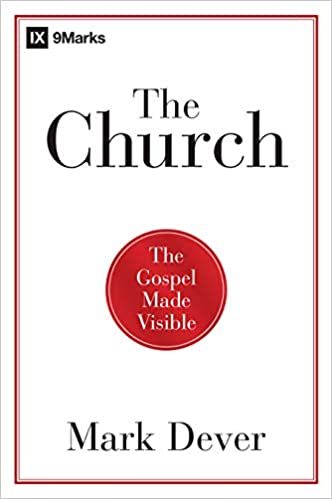A Brief Book Summary from Books at a Glance
by Steve West
About the Author
Mark Dever is the senior pastor of Capitol Hill Baptist Church in Washington, D.C. He is the president of 9Marks and has published numerous works on ecclesiology and church leadership.
Table of Contents
Part 1 What Does the Bible Say?
1 The Nature of the Church
2 The Attributes of the Church: One, Holy, Universal, Apostolic
3 The Marks of the Church
4 The Membership of the Church
5 The Polity of the Church
6 The Discipline of the Church
7 The Purpose of the Church
8 The Hope of the Church
Part 2 What Has the Church Believed?
9 The History of the Idea of the Church
10 The History of the Ordinances of the Church
11 The History of the Organization of the Church
Part 3 How Does It All Fit Together?
12 A Protestant Church: Putting Together the Marks of the Church
13 A Gathered Church: Putting Together the Membership of the Church
14 A Congregational Church: Putting Together the Structure of the Church
15 A Baptist Church: Should We Have Baptist Churches Today?
Conclusion: Why Does This Matter?
Summary
Preface
Although the doctrine of the church is of the utmost importance, many Christians neglect it or spend little time thinking about it. Christ’s church is the most visible part of our theology and the gospel, and it can only exist because of the gospel. The redemption of the church, Christ’s bride, is central to God’s plan for the world, and his ongoing work of reaching the nations operates through the church. We are to proclaim the gospel but living together in the church makes the gospel visible.
Part 1: What Does the Bible Say?
“The church is the body of people called by God’s grace through faith in Christ to glorify him together by serving him in his world.” The church as a visible body is not identical with the assembly in the Old Testament, but it is in continuity with it. God reveals his glory through the corporate body of the redeemed. God dwells with his assembled people; he is really among them. There are commonalities, but there are also key distinctions between Israel and the New Testament church. Christ fulfills the promises, institutions, and types of the old covenant administration. Like Israel, the church is called together so that God can be glorified through a corporate group of people. In the New Testament, the word ekklesia refers to the church as well as to other gatherings and assemblies. When the reference is to Christ’s church, the meaning is that it is the special assembly of the Messiah. The church can refer to a local congregation or to believers everywhere in the world. Paul’s primary usage of ekklesia shows that it is usually thought of as a visible, specific assembly. Numerous images and metaphors are used to describe the church, including the bride of Christ and the temple of God. It is vital to see that there are four major clusters of ideas that help us understand the church. These ideas cluster around: 1. The people of God; 2. The new creation; 3. Fellowship; 4. The body of Christ. The kingdom of God and the church are not identical. It is the kingdom of God that creates the church and works through it, and the church is to proclaim the gospel of the kingdom. When Christ returns he will bring the kingdom in glory. . . .
[To continue reading this summary, please see below....]The remainder of this article is premium content. Become a member to continue reading.
Already have an account? Sign In
Buy the books

THE CHURCH: THE GOSPEL MADE VISIBLE, by Mark Dever